USB Type-C Market Status
In recent years, it has become an indispensable interface for data transfer between devices such as laptops (PCs), smartphones, and digital cameras. There are prospects.
Furthermore, power supply via USB Type-C Power Delivery (hereafter referred to as PD) is also attracting attention, and there is a trend to equip adapters, outlets, and chargers for supplying power to familiar products with the same function. There is a public opinion that in two years it will be installed in automobiles, and in five years all power ports will be equipped with Type-C PD, so now is the time for Type-C PD to spread.
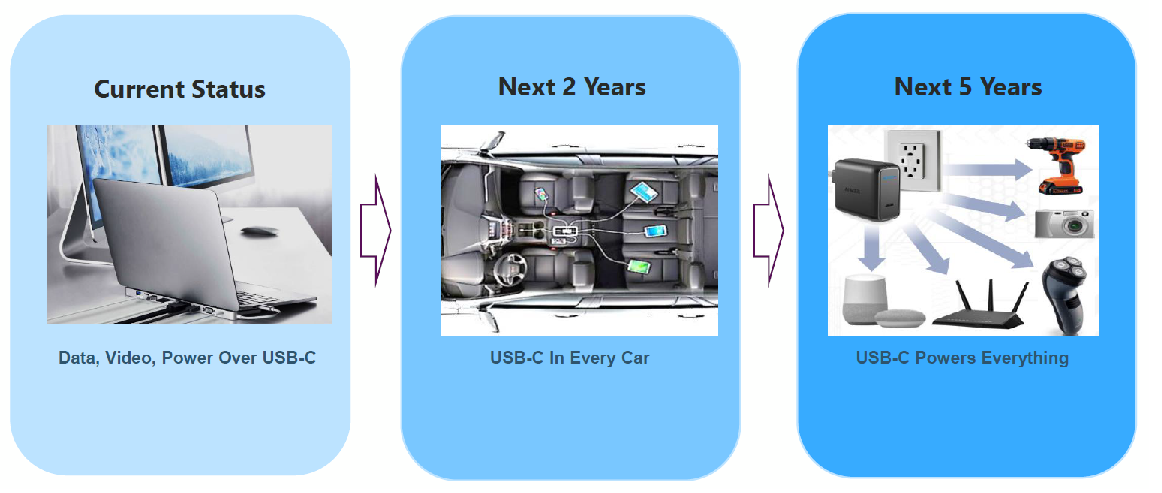
Overview of the USB standard
・Abbreviation for Universal Serial Bus
・A standard for connecting various peripheral devices such as personal computers and home appliances
・It is possible to perform data communication and power supply
・The name of the standard differs depending on the data transfer speed/power (USB1.1~3.xx)
*Refer to the diagram below.
|
Standard name |
Maximum speed(bps) |
Maximum distance |
Power supply |
|
|
USB1.1 |
USB1.1 |
1.5M/12M |
5m |
5V/500mA |
|
USB2.0 |
USB2.0 |
480M |
4m |
5V/500mA |
|
USB3.0 |
USB3.0 |
5G |
3m |
5V/900mA |
|
USB3.1 |
USB3.1 Gen1 |
5G |
3m |
5V/900mA 1.5A/3A (Type-C) |
|
USB3,1 Gen2 |
10G |
1m |
5V/1000mA 1.5A/3A (Type-C) |
|
|
USB3.2 |
USB3.2 Gen1 |
5G |
2m |
5V/900mA 1.5A/3A (Type-C) |
|
USB3.2 Gen2 |
10G |
1m |
5V/1000mA 1.5A/3A (Type-C) |
|
|
USB3.2 Gen2x2 |
20G |
1m |
1.5A/3A |
By using a Type-C cable, in addition to USB communication, HDMI, DP, and Thunderbolt communication are possible with the same cable and connector. Furthermore, reversible (connection regardless of direction) and power delivery up to 100W (20V/5A) are possible. It will be expanded to 240W in the future.

Difference between Type-C and Type-C PD
Type-C conforms to the connector standard, and can support up to 15W (5V / 3A) as power. Furthermore, by supporting Type-C PD, the following functions can be expanded.
Main Type-C PD features
- Power can be supplied up to 100W *Will be expanded to 240W in the future
- Power and USB data role-swappable
- Display Port/HDMI Alternate Mode support
I. Can power up to 100W
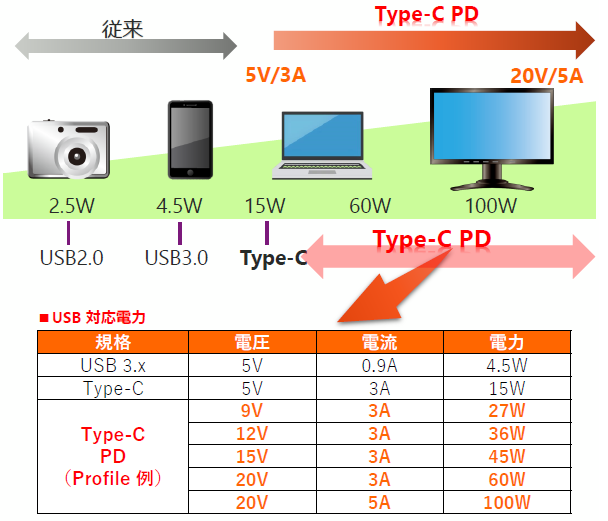

II. Power and USB data role-swappable
Sink/Source
With a Type-c PD installed, the Type-C port can act as Source, Sink or both
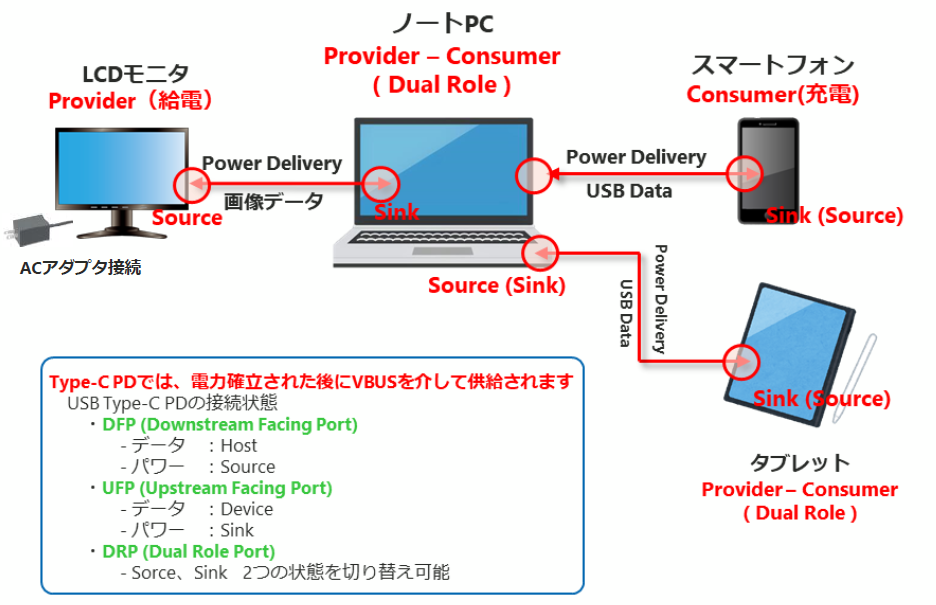
III. Display Port/HDMI Alternate Mode support
Alternate Mode
This is a function that uses Type-C signals for purposes other than USB SS signals. It can be connected to devices of various standards by supporting the operation mode (Alternate Mode) of the Type-C connector. Examples include Intel's "Thunderbolt" and VESA's "DisplayPort Alternate Mode". Also, the output side (host) must support this function.

Terminal required for Type-C PD controller
・Dual Role Port (DRP) And Downstream Facing Port (DFP)
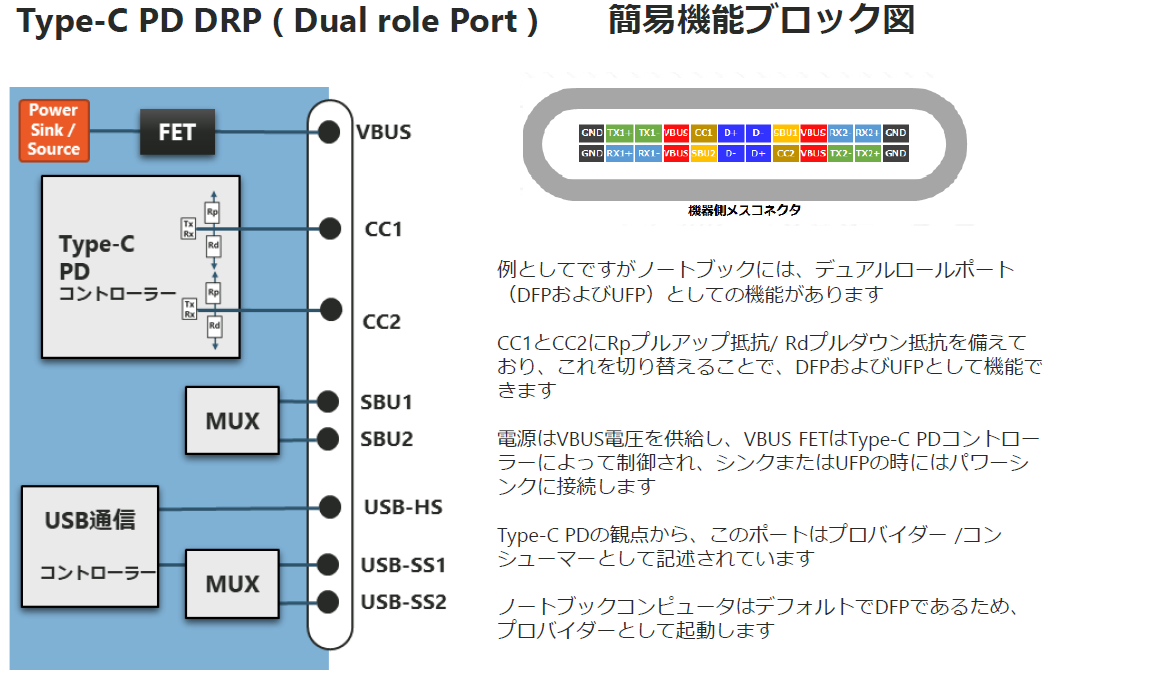
H/W design example
Monitor/Dock block diagram
block description
By installing a Type-C PD controller, this solution enables the following functions.
・5V/9V/15V@3A power can be supplied from the upstream Type-C port.
・15V@3A power can be supplied from the downstream Type-C port.
・DisplayPort Alternate Mode
Infineon Type-C PD product features
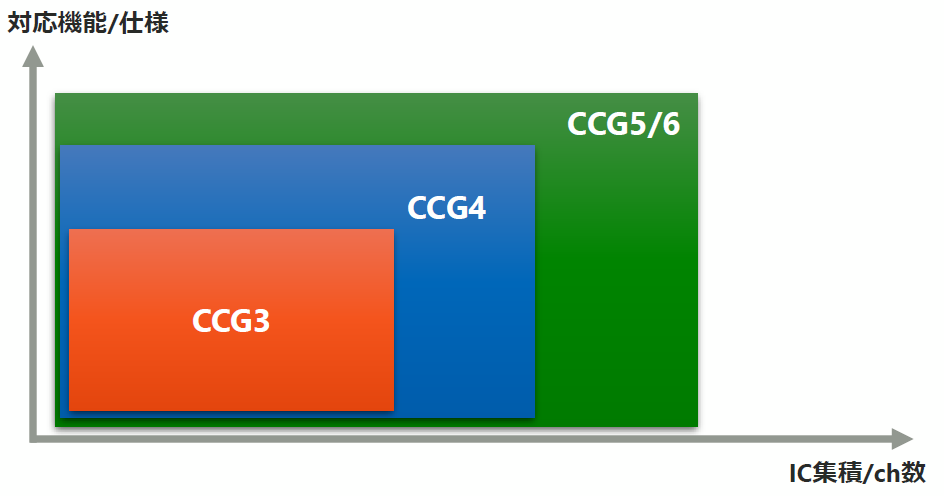
Inquiry / Quotation
If you have any questions about this product or would like a quote, please contact us using the link below.
To manufacturer information TOP
If you want to return to the manufacturer information TOP, please click below.
